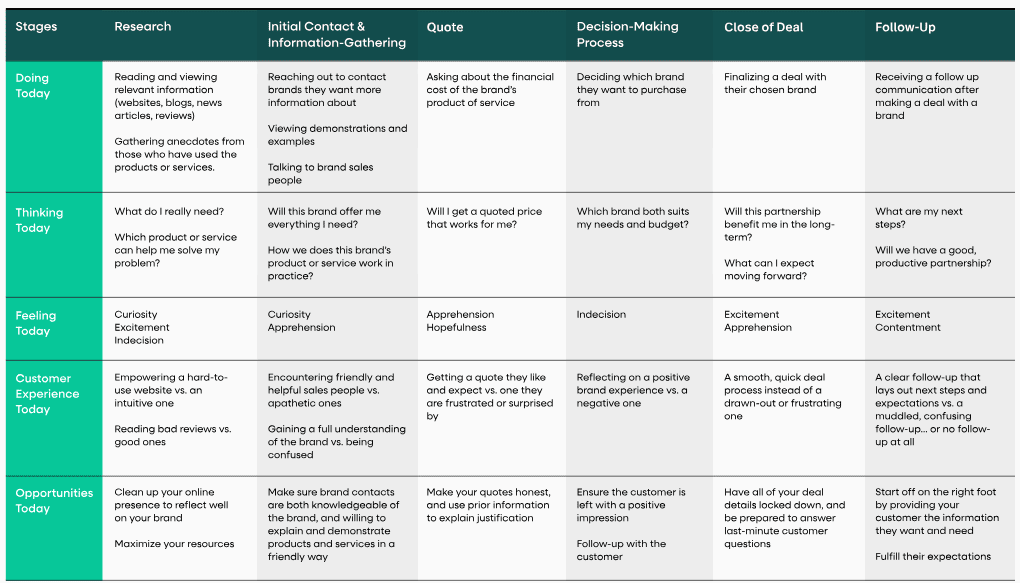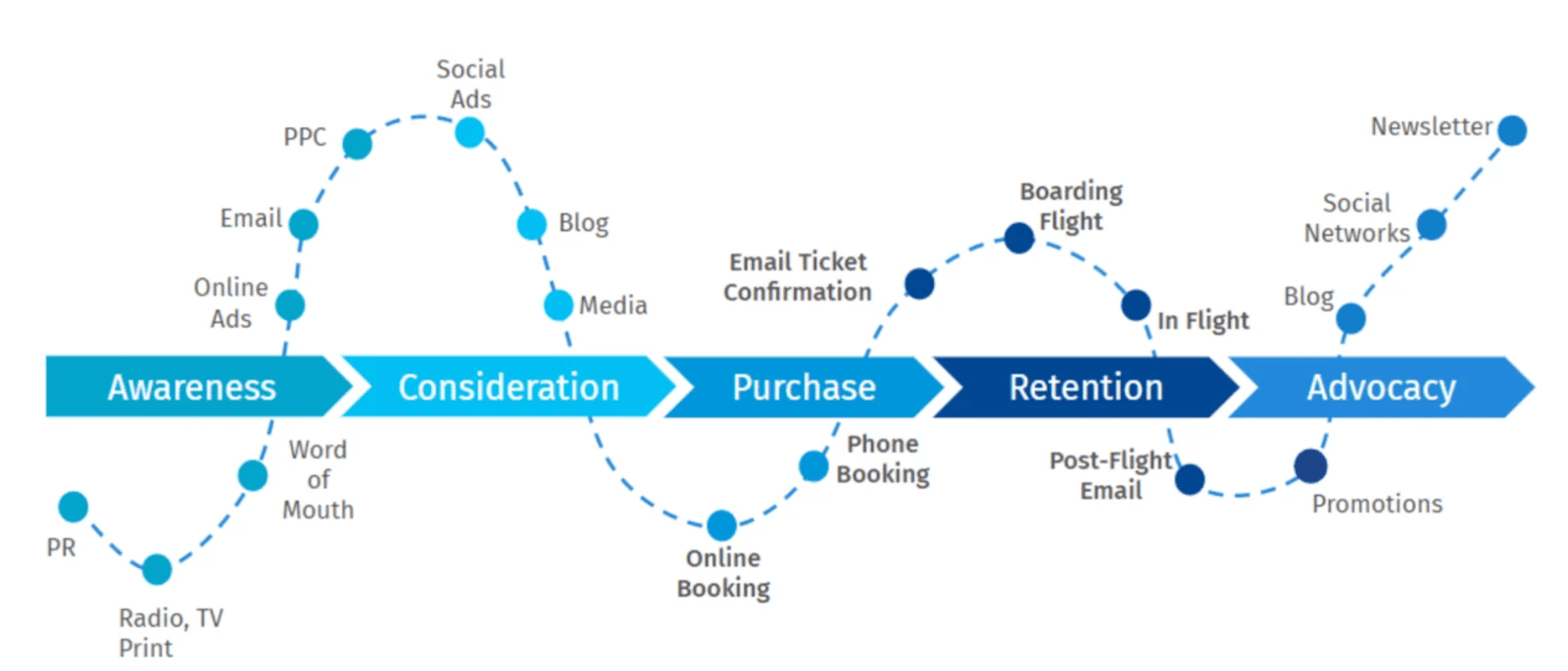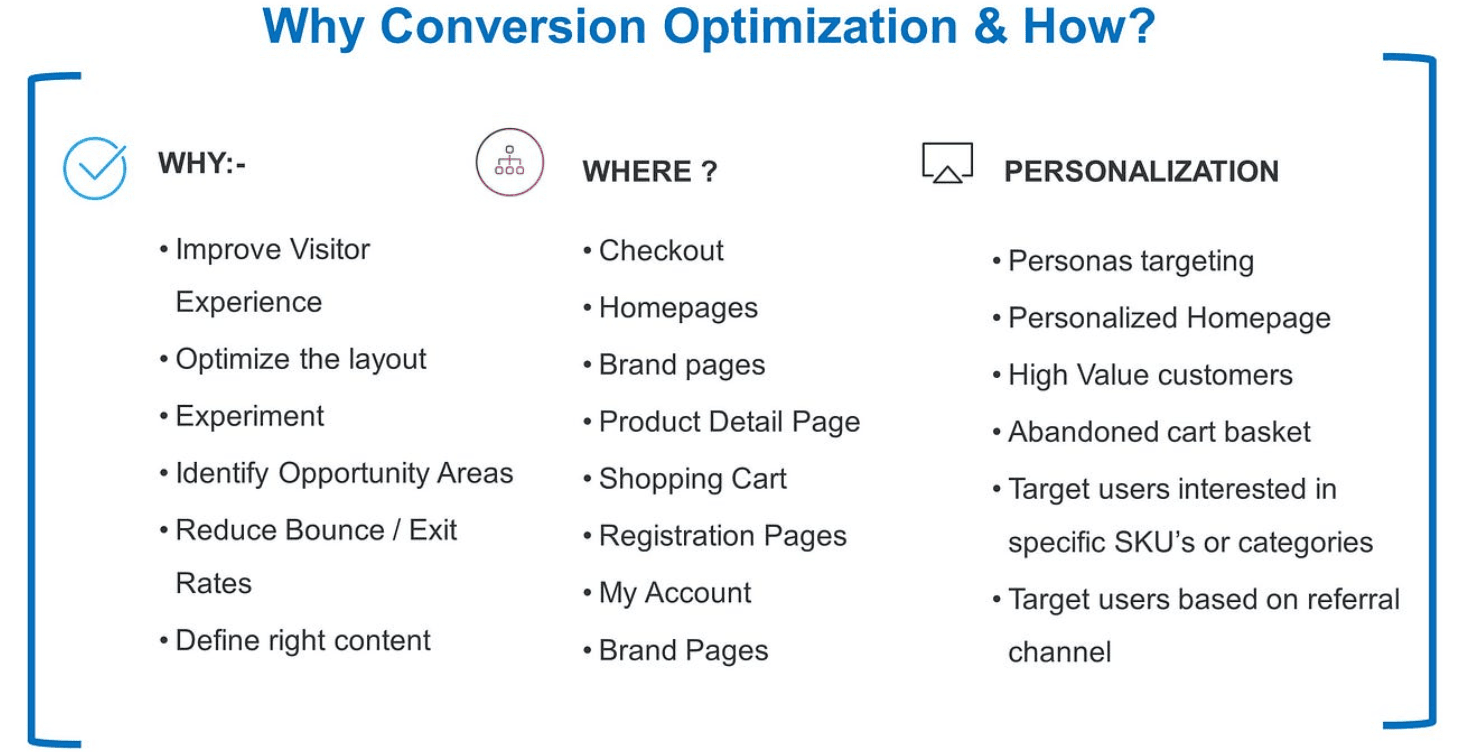magine this: you've poured your heart and soul into crafting compelling content, meticulously curated social media campaigns, and meticulously designed landing pages. Yet, your website traffic remains stagnant, and conversions seem elusive. This scenario is a reality for many businesses, highlighting the critical need for a laser-focused approach to optimizing the client journey at every touchpoint.
Here at Erphub.com, we understand the importance of maximizing click-through rates (CTRs) throughout the customer lifecycle. Borrowing from the wisdom of McKinsey & Company's renowned customer-centric approach, we've meticulously researched and developed a comprehensive framework to address this challenge. Our approach, built on the foundation of data-driven insights and tailored solutions, empowers businesses to turn website visitors into loyal customers.
In today’s rapidly evolving digital landscape, improving your click-through rate (CTR) is no longer a simple matter of fine-tuning your ads or writing a compelling call-to-action (CTA). For businesses seeking sustainable growth, such as those Erphub serves, optimizing the client journey as a whole is essential. The path from initial awareness to conversion is filled with critical touchpoints that must be carefully calibrated. Each phase offers a unique opportunity to engage, nurture, and eventually convert potential leads into loyal customers. Focusing on improving CTR across this entire journey can create a significant impact on your business's bottom line.

But why does CTR matter so much?
CTR is a key performance indicator (KPI) that reflects how well your marketing efforts are engaging your target audience. A higher CTR means your content, ads, or messaging is resonating with your audience, pushing them to take action—whether that’s clicking on a social media post, engaging with an email, or exploring your website further. For companies like Erphub that build tailored, affordable digital solutions for businesses, understanding and optimizing this metric across the client journey isn’t just about driving traffic—it’s about guiding customers through a seamless, value-driven experience that increases the likelihood of conversion at every stage.
Understanding the Client Journey
To optimize CTR effectively, you need to view the client journey as a series of interconnected phases, where each phase either propels a lead closer to conversion or creates friction that causes drop-offs. At each phase, there are specific touchpoints and KPIs that must be monitored, analyzed, and optimized. From the initial awareness stage, where potential customers first encounter your brand, through to the consideration, decision, and action stages, optimizing each touchpoint can greatly enhance CTR and overall conversion rates.
For Erphub’s clients—businesses that often need customized digital solutions—the focus should be on building an experience that doesn’t just drive clicks but fosters engagement and nurtures trust. Solutions should be rooted in solid data analysis, automation, and tailored content strategies to meet the unique needs of each client.

Foundation-Level Aspects: Cause and Effect on CTR
Before diving into detailed optimization strategies, it's important to establish a foundational understanding of the factors that influence CTR at each phase of the client journey. Below is a table that outlines foundational aspects of the client journey, their impact on CTR, and the possible effects.
| Aspect | Cause | Effect on CTR |
|---|---|---|
| Audience Targeting | Reaching the wrong audience with content or ads | Lower CTR due to lack of relevance and engagement |
| Message Relevance | Misalignment between audience needs and messaging | Potential leads may ignore the CTA, reducing CTR |
| User Experience (UX) | Complicated, cluttered user interfaces | Frustration or confusion leads to drop-offs and low CTR |
| Load Time of Content/Ads | Slow website or ad loading times | Leads may abandon the page, reducing overall engagement |
| Call-to-Action (CTA) Quality | Vague or uninspiring CTAs | Lower inclination to click through, resulting in low CTR |
| Retargeting and Personalization | Lack of follow-up for previous visitors or customers | Missed opportunities to re-engage, resulting in a flat CTR |
| Ad Copy and Design | Weak creative elements and unclear messaging | Reduced click-through potential, limiting campaign effectiveness |
By understanding these key drivers, businesses can better optimize their client journey from the first point of contact, reducing friction and improving CTR as a whole.
Navigating the Labyrinth: Guiding Clients Through the Touchpoints
The online client journey often begins with an initial spark – a social media post, a blog article, a YouTube video, or even an email. This initial touchpoint serves as the gateway to your brand, and its effectiveness hinges on capturing attention and driving clicks. At a foundation level, the discover process would include the following touch-points:
Social Media Engagement: Likes, Shares, Comments
- Website Traffic: Number of Unique Visitors
- Email Open Rates: Percentage of Emails Opened
Scenario 1: Customer Initiates Further Exploration
Following that initial spark, a curious customer may decide to learn more. This exploration could take them directly to your website, where a well-designed homepage becomes the next key touchpoint. Here, user-friendly design reigns supreme. A clean interface, intuitive navigation, and clear CTAs guide the customer through the relevant information and prompt them to engage with your offerings.
However, not all customers follow this linear path. Some may choose to explore further on social media itself, engaging with your brand's story and interacting with your content. In these scenarios, fostering a sense of community and offering interactive elements can encourage further exploration and click-throughs.
Quantitative KPI Action Approach:
- Heatmaps: Analyze user behavior on your website to identify areas of high traffic and potential click-through opportunities.
- Click-Through Rates: Track the percentage of users who click on specific CTAs from different touch-points.
Qualitative Aspects:
- Customer Reviews: Analyze customer feedback to understand their website experience and identify areas for improvement.
- Social Media Interactions: Monitor how users engage with your content and tailor messaging accordingly.
Key Pathways for Continued Exploration:
- Blog Posts: Include CTAs at the end of blog posts directing users to relevant product pages or contact forms.
- Social Media Profiles: Leverage social media bio sections to link to key landing pages or promotional offers.
- Email Newsletters: Craft engaging email newsletters with enticing CTAs and personalized product recommendations.
Scenario 2: Customer Takes No Action
Not all customers will immediately jump towards further exploration. In these scenarios, understanding the "why" behind the inaction becomes crucial. Here, data becomes your ally. Tracking website analytics and user behavior can reveal areas of friction or a lack of relevant information. Perhaps the initial content wasn't targeted enough or the CTA wasn't clear.
Exploring the "Why": Analyze the following:
- Bounce Rate: Percentage of users who leave your website after viewing only one page.
- Exit Pages: Pages from which users leave your website.
Addressing Inaction:
- Retargeting Campaigns: Use remarketing to re-engage customers who have shown interest but haven't taken action.
- Personalized Follow-ups: Send personalized emails or messages to address any specific concerns or questions.
- Enhanced Content: Improve the quality and relevance of your content to address customer needs more effectively.

The Path to Conversion: From Exploration to Purchase
Once a customer has explored your website or engaged with your content, the next step is to guide them towards conversion. This involves a carefully crafted journey that includes:
- Clear CTAs: Use strong, action-oriented CTAs to encourage users to take the desired action (e.g., "Buy Now," "Learn More").
- Product Pages: Ensure product pages are informative, visually appealing, and easy to navigate.
- Shopping Cart Optimization: Minimize friction in the checkout process to reduce cart abandonment.
- Secure Payment Options: Offer a variety of secure payment methods to meet customer preferences.
Key KPIs to Track:
- Conversion Rate: Percentage of website visitors who complete a desired action (e.g., purchase, sign up).
- Average Order Value: Average value of customer purchases.
- Customer Lifetime Value: Total revenue generated by a customer over their lifetime.
The Role of Customer Support in the Journey
Effective customer support plays a crucial role in the client journey. A responsive and helpful support team can:
- Address Inquiries: Promptly answer customer questions and resolve issues.
- Provide Guidance: Offer recommendations and assistance throughout the buying process.
- Build Relationships: Foster trust and loyalty through personalized interactions.
Key KPIs for Customer Support:
- First Contact Resolution (FCR): Percentage of customer issues resolved on the first contact.
- Customer Satisfaction: Measure customer satisfaction through surveys and feedback.
- Average Response Time: Track the time it takes to respond to customer inquiries.
Key Touchpoints in the Client Journey and their impact on CTR
1. Initial Touchpoints: Where the Client Journey Begins
In the digital age, the client journey often begins in a variety of places—on social media, through an email campaign, from a search engine, or even via a YouTube video or a blog post. Understanding these key touchpoints is essential for maximizing CTR from the very start. For most businesses, these touchpoints include:
- Social Media Posts: Platforms like Facebook, LinkedIn, and Instagram are often where potential clients first come across your brand.
- Paid Ads (Google Ads, Social Ads): Many clients find a business via paid search or social media ads. Optimizing CTR here requires precise targeting and engaging creative.
- Emails: Whether part of a newsletter, promotional campaign, or an abandoned cart reminder, email remains a critical touchpoint in initiating client engagement.
- Content Marketing: Blog posts, case studies, and videos can draw users in through organic search or content sharing.
At a core level, here’s a possible breakdown of optimization solutions across the client journey to improve the click-through rate (CTR) at each phase towards conversion:
Awareness Phase: Attracting Prospects
Solution: Targeted Ad Campaigns
Use data-driven targeting and personalized messaging in ads to reach the right audience, increasing CTR by capturing their attention with relevant content.Solution: SEO and Content Optimization
Improve search rankings and optimize website content for key phrases your target audience searches for, ensuring your brand appears in front of potential clients more often.
Consideration Phase: Engaging Potential Clients
Solution: A/B Testing for Landing Pages
Test different versions of landing pages to see which elements (headlines, CTAs, visuals) yield the highest engagement, optimizing for improved CTR.Solution: Retargeting Campaigns
Re-engage visitors who have previously interacted with your site or ads through retargeting, reminding them of the value your business offers and prompting clicks.
Decision Phase: Nurturing Leads
Solution: Personalized Email Marketing
Send tailored emails based on user behavior (e.g., abandoned carts or content downloads) with clear CTAs that guide potential clients back to your site for conversion.Solution: Dynamic Content
Implement dynamic content on your website or emails that adapts to user preferences and past behavior, increasing relevance and the likelihood of clicks leading to conversion.
Action Phase: Driving Conversions
Solution: Optimized Checkout Process
Simplify and optimize the checkout process, with clear CTAs and easy-to-follow steps, reducing friction and encouraging prospects to complete their conversions.Solution: Real-Time Chat Assistance
Implement AI-driven or live chat solutions to assist prospects with any questions or hesitations, prompting timely clicks and decisions to proceed with conversions.
Each of these touchpoints has specific KPIs that need to be tracked to optimize CTR, such as:
| Touchpoint | Key KPIs |
|---|---|
| Social Media | Impressions, Clicks, Shares, Engagement Rate |
| Paid Ads | Impressions, CTR, Conversion Rate |
| Emails | Open Rate, CTR, Bounce Rate, Unsubscribe Rate |
| Content Marketing | Organic Traffic, Page Views, Time on Page, CTR |
Actionable Optimization Strategies:
- For Social Media: Use precise audience segmentation, experiment with different content formats (videos, carousels, infographics), and A/B test CTAs to boost engagement and CTR.
- For Paid Ads: Target high-intent keywords, optimize landing pages for faster load times, and craft compelling ad copy that directly addresses pain points.
- For Emails: Use personalized subject lines, segment email lists based on user behavior, and ensure that your CTAs are clearly visible and actionable within the email body.
2. The Next Step: Exploration and Engagement
Once the potential client has clicked through the initial touchpoint, the next phase involves exploration and further engagement. This could mean browsing your website, consuming more content, or interacting with a chatbot. Optimizing CTR at this stage requires a combination of excellent user experience (UX), persuasive content, and streamlined navigation.
Key Scenarios to Consider:
Scenario 1: The client immediately clicks through and begins exploring the website further, looking at products, services, or additional content. This is the ideal outcome, and optimizing for deeper engagement at this stage is crucial.
Scenario 2: The client clicks through but bounces off quickly, indicating that the initial content didn’t match their expectations or the website experience was subpar. Addressing this requires a deeper look into your bounce rate, time on page, and user flow.
For both scenarios, focus on the following optimizations:
| Optimization Area | Action |
|---|---|
| Landing Page Design | Simplify the layout, reduce clutter, and ensure CTAs are above the fold for easy access. |
| Content Relevance | Ensure that the landing page aligns with the promise of the ad or content that led them there. |
| Mobile Optimization | Guarantee that your landing page and website are fully optimized for mobile users. |
| Clear Navigation Paths | Use breadcrumbs, internal linking, and clear categories to make exploring further easy. |
3. The Decision-Making Stage: Nurturing Leads to Conversion
By this point, your client has gathered enough information and is ready to make a decision. The focus now shifts to nurturing them toward conversion, whether that means signing up for a demo, filling out a contact form, or making a purchase. Optimizing CTR at this stage involves removing any remaining friction and providing clear, compelling reasons for the client to take the final step.
| Key Strategies to Optimize CTR | Tactics |
|---|---|
| Optimized CTAs | Ensure your CTA stands out and communicates value (e.g., “Get Your Free Demo” or “Contact Us Today”). |
| Conversion-Focused Landing Pages | Design pages specifically for lead capture or sales, with testimonials, trust badges, and a strong CTA. |
| Email Nurturing Sequences | Use automated, personalized email campaigns to guide leads toward conversion, based on their behavior. |
| Retargeting | Retarget users who visited key pages (e.g., pricing page) but didn’t convert, using personalized ads. |
Conclusion: Summing Up the Journey to Optimized CTR
The client journey is complex, involving multiple touchpoints and phases that all require optimization to improve click-through rates. For businesses leveraging Erphub’s tailored digital solutions, every phase—from awareness to conversion—presents a unique opportunity to engage potential clients and foster a seamless, effective journey toward conversion.
By focusing on optimizing initial touchpoints, ensuring a smooth and engaging exploration phase, and guiding decision-making with well-crafted CTAs and nurturing sequences, businesses can significantly improve their CTR and overall conversion rates. Advanced analytics, A/B testing, and a customer-centric approach are key components that Erphub can help implement, ensuring that your business not only improves CTR but thrives in a competitive market.

